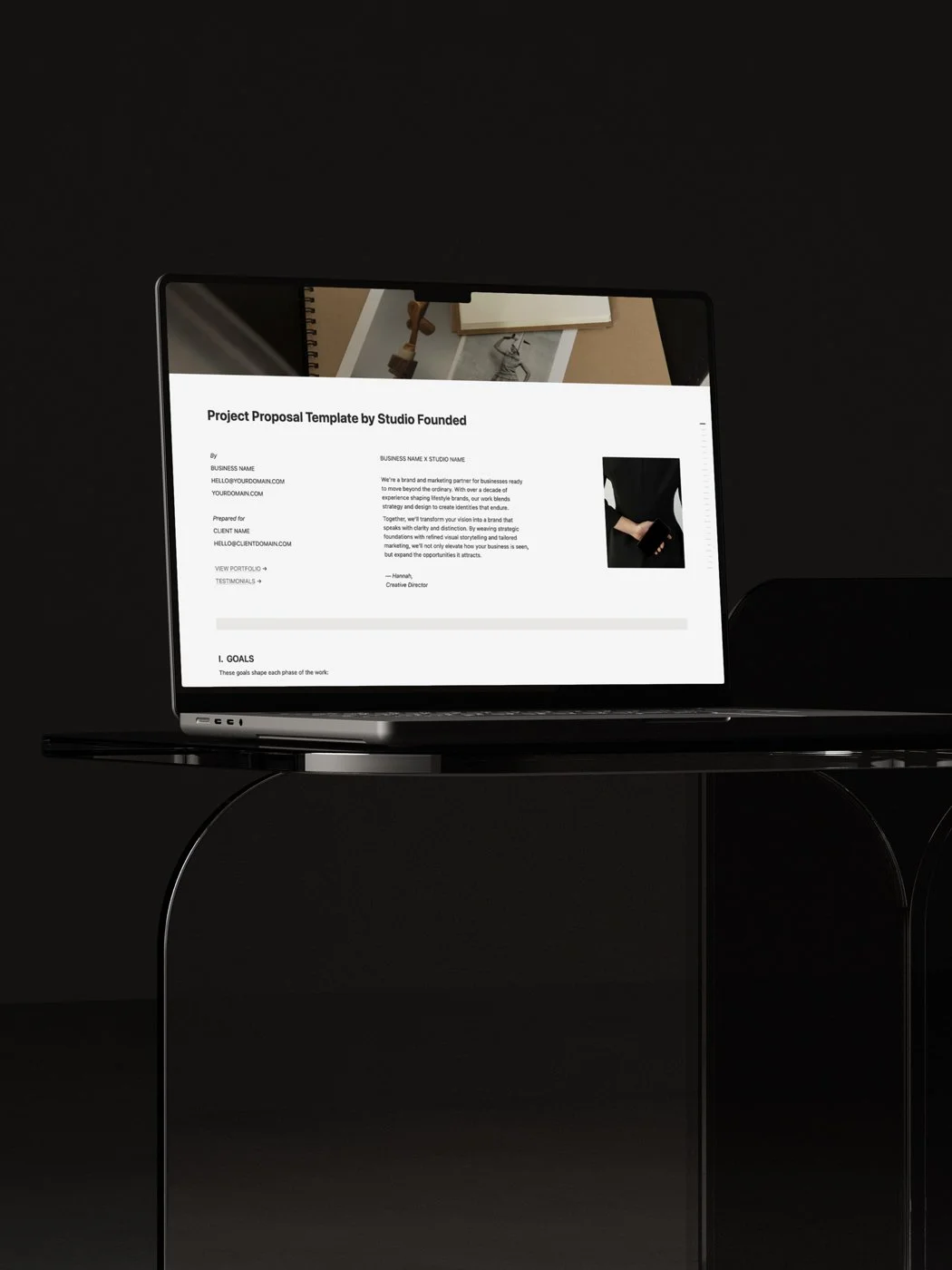Brand Vision: The Difference Between Drifting and Leading
Brand Materials is a ten-part series for founders exploring the foundations of brand strategy, from purpose and positioning to voice, personality, and emotional connection.
Each entry is a self-guided workshop, structured to give direction while letting your ideas unfold. Think of it as a companion to your branding process: a place to ask sharper questions, refine your message, and shape a brand that’s deeply compelling.
In this post, we’ll explore what it means to have brand vision and to use it to become an industry leader.
Why Brand Vision Matters
Many founders confuse brand vision with goals. They set revenue targets, launch dates, and analyse social media metrics. But goals without vision = busywork. They keep you moving, but not necessarily leading.
Without a clear vision, brands slip into reactivity. They chase trends, pivot often, and dilute their message with every new tactic. The business starts to feel like survival mode: one step forward, two steps sideways.
Vision is the antidote. It means choosing the future you want to create, and then building toward it with consistency. Vision makes your ideas cohere, your decisions sharper, and your audience more inspired to come on the journey with you.
If purpose is why your brand exists, vision is where it’s going, and without it, you risk drifting.
The Benefits of Brand Vision
When your vision clear, it reshapes your processes and how you work day-to-day, giving you:
Coherence. Instead of pulling you in competing directions, your projects build on each other, creating momentum.
Confidence. With vision, decisions get simpler. You know what fits and what doesn’t, which opportunities to take and which to leave behind.
Connection. It inspires your audience and helps you build content around topics that matter to you and your customers.
Vision turns aspiration into a structure you can act on.
How to Vision Cast
Think of vision casting as strategic imagination: ambitious enough to pull you forward, but grounded enough to steer your direction today (not wildly impossible to achieve). Instead of plotting a rigid five-year plan, you’re exploring your big-picture thinking.
1. Anchor in Purpose (your why)
Your vision grows from your purpose.
Prompts:
If our purpose were fully lived, what would be undeniably true in our world?
What change would we be proud to have catalysed?
2. Draw the Horizon (the where)
Zoom out 5, 10, even 20 years. Make it tangible.
Prompts:
What have we built (products, experiences, communities)?
What are we known for that we aren’t known for yet?
What does success feel like when it aligns with our values?
3. Set the Values Frame (the how)
Values are your non-negotiable principles.
Prompts:
What won’t we compromise on—pace, materials, access, ethics?
What constraints will keep our growth clean (e.g., seasonal launches, ethical suppliers, small-batch service capacity)?
4. Name the Community (the who)
Vision is communal. What community do you want to build?
Prompts:
Whose future are we building with?
Because our brand exists, what can they now do/say/feel?
5. Leverage & Stretch (the with what)
Great visions build from existing equities while exploring new edges.
Prompts:
What assets already work (reputation, aesthetic, IP, processes) that we can leverage?
Where will we stretch—new categories, narratives, partnerships, formats?
6. Proofs of Progress (the signals)
Choose indicators that show you’re moving toward the vision.
Prompts:
What early signals would tell us we’re on track (quality of clients, depth of engagement, referral rate, cultural mentions)?
What milestones matter in the next 12–24 months?
How To Write a Brand Vision Statement (The Invitation)
Translate what you learned in the six step above into a short vision statement.
Template to riff on:
We are building a {category/space} defined by {values}, known for {distinctives}. We serve {community} so they can {transformation}. Our work shows up as {offers/experiences}, and over time it creates {cultural/industry shift}.
Examples:
Our brand vision is to make sustainable wellbeing accessible by blending evidence-based practices with mindful rituals, so busy professionals can thrive without burnout.
Our brand vision is to create a world where ethical fashion is the norm for conscious consumers by designing timeless, responsibly made clothing to empower people and the planet.
Our brand vision is to make high-quality business education accessible for emerging entrepreneurs by providing expert-led courses to simplify strategy and accelerate growth.
Your vision statement should feel clear, specific, and emotionally compelling, reminding you (and others) why your work matters.
How to Use Your Brand Vision
A brand vision is a living framework that shapes how you communicate. Use it to:
1. Filter decisions
Every new opportunity, offer, or collaboration comes with costs and opportunities. Vision lets you decide which costs are worth paying. Before saying yes, ask: Does this build the future we’ve committed to? Or does it pull us always from it?
2. Deepen your messaging
Messaging without vision can sound transactional. Messaging combines with vision shows leadership. If your vision is about expanding access, your words should feel spacious, inviting, and human. If it’s rooted in disruption, your content should challenge assumptions, spotlight blind spots, and invite your audience to imagine a different world.
3. Build your experience
Your vision should be felt in how you onboard clients, the metaphors you use to name offers, even in the rhythm of your launch cycles. When your audience can experience your vision, it becomes a strategic tool.
Recap
Vision stops your brand from drifting into short-term reaction and anchors it in the future you want to build.
In this post, you’ve:
Explored why brand vision matters.
Identified the layers that shape a compelling vision: purpose, values, audience, and future impact.
Translated those ideas into a Vision Story and distilled them into a Vision Statement.
Learned how to use vision as an operating system, shaping the lived experience of your brand.
Concluding Thoughts
A vision is the connective tissue between your daily decisions and the cultural impact you want to leave and the communities you want to build. When you lead with vision, you start building rhythmically, intentionally, and with weight.
Up Next: Exploring Brand Mission
Your brand vision defines where you’re going. Now it’s time to define how you’ll get there. In the next chapter of Brand Materials, we’ll break down your brand mission—the strategic bridge between vision and action.






